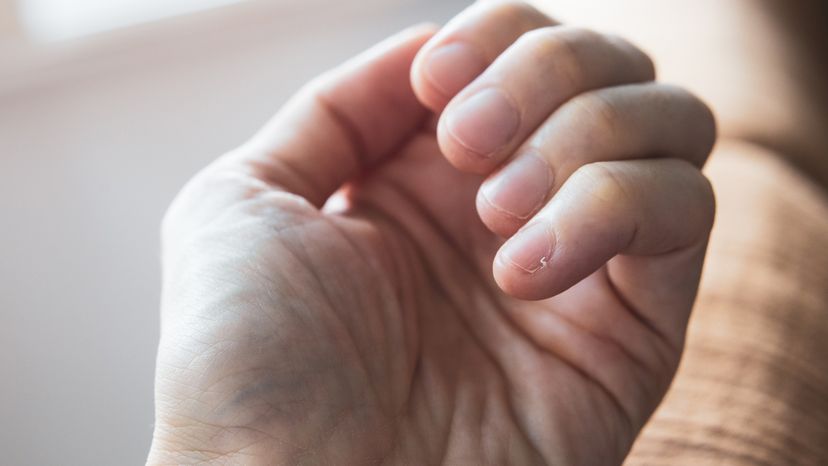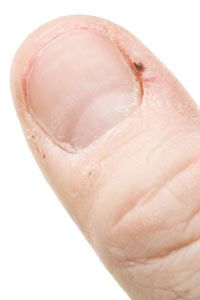
Many of us take advantage of our nails. We bite them. We rip them. We use them as tools. And when something minor goes wrong we often don't know what the problem is. Take hangnails, for example. It's a common misconception that hangnails and ingrown nails are the same, or at least have something to do with each other: They aren't, and they don't.
An ingrown nail is a nail that grows into the surrounding skin, causing pain, swelling and redness. A hangnail, on the other hand, doesn't actually have anything to do with the nail itself. Hangnails are those triangular-shaped bits of skin that sometimes develop on the sides of your fingernails.
Advertisement
Common causes of hangnails:
- Dry skin
- Cold, dry winter climate
- Overexposure to harsh chemicals
- Frequently immersing your unprotected hands in water
Hangnails can be dry, brittle and can cause skin tearing if left untreated or if treated improperly. The best way to remove a hangnail isn't to bite or tear it off. First, soften your hand(s) in a warm water soak for a few minutes (or take advantage of the skin-softening effects of a shower) and then carefully clip off the hangnail with cuticle scissors. Continue to moisturize the area, and cover with a bandage if needed.
The simple way to help prevent hangnails from happening in the first place is to stock up on moisturizer and use it: Rub lotion, hand cream or cuticle oil into your nails, cuticles and the surrounding skin at least two to three times a day. Regular manicures can also be good for your nail health, just remember that pushing cuticles back is healthier than cutting them (which may increase the risk of a nail infection).
If you tend to have hangnails, it's also time to stop biting your nails. Nail biting can cause damage to the nail bed -- the skin beneath your nail -- and ups your risk of having hangnails. It also increases your risk of having infected hangnails (think of all that hand-to-mouth germ activity -- bitten, torn hangnails are an open door for bacteria). If your hangnail or surrounding area swells or becomes red or filled with pus, it could signal an infection, usually a condition called paronychia.
Paronychia can be caused by bacteria, yeast or fungus, and as with any sign of infection, should be treated by a health care professional.
Advertisement

